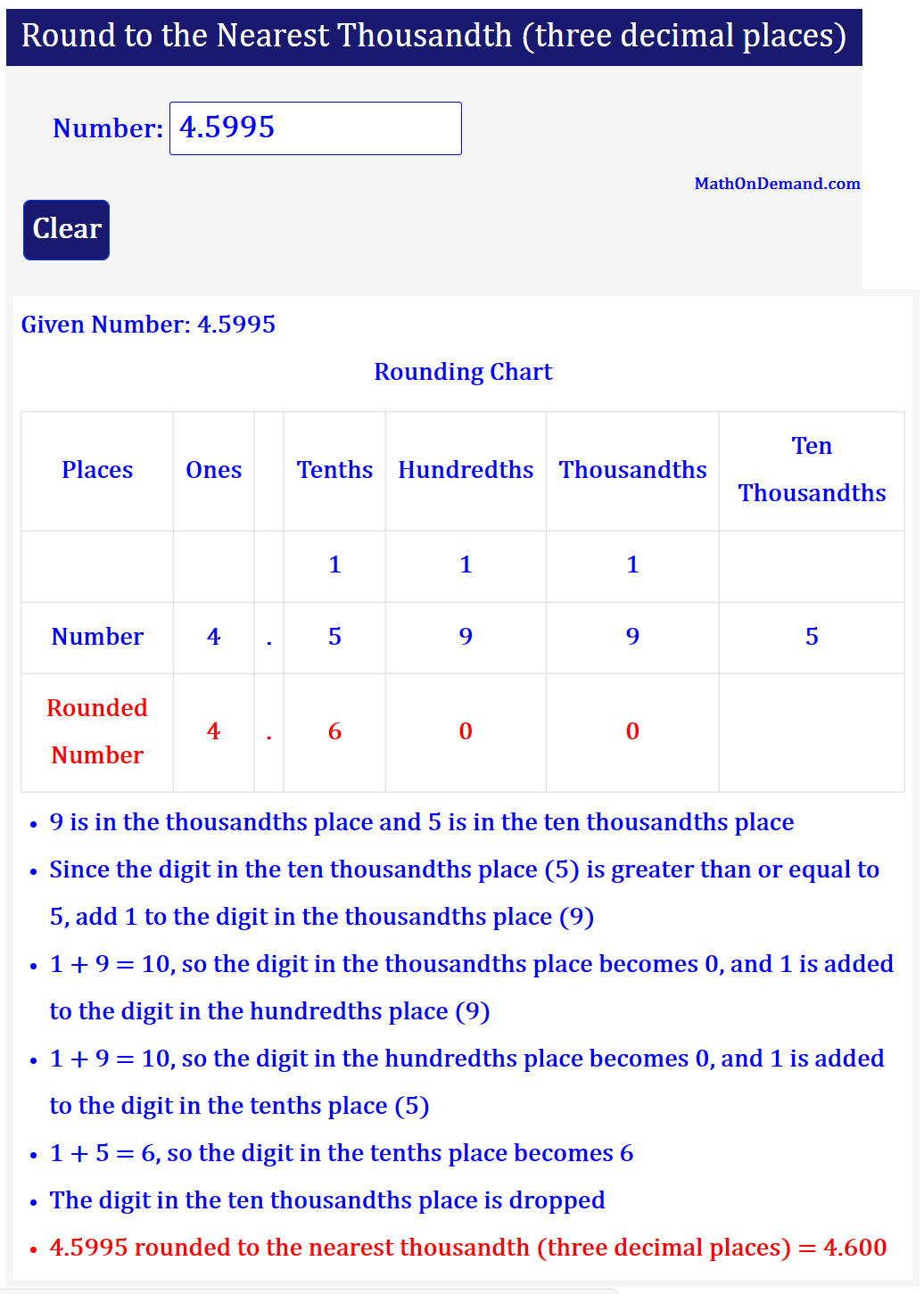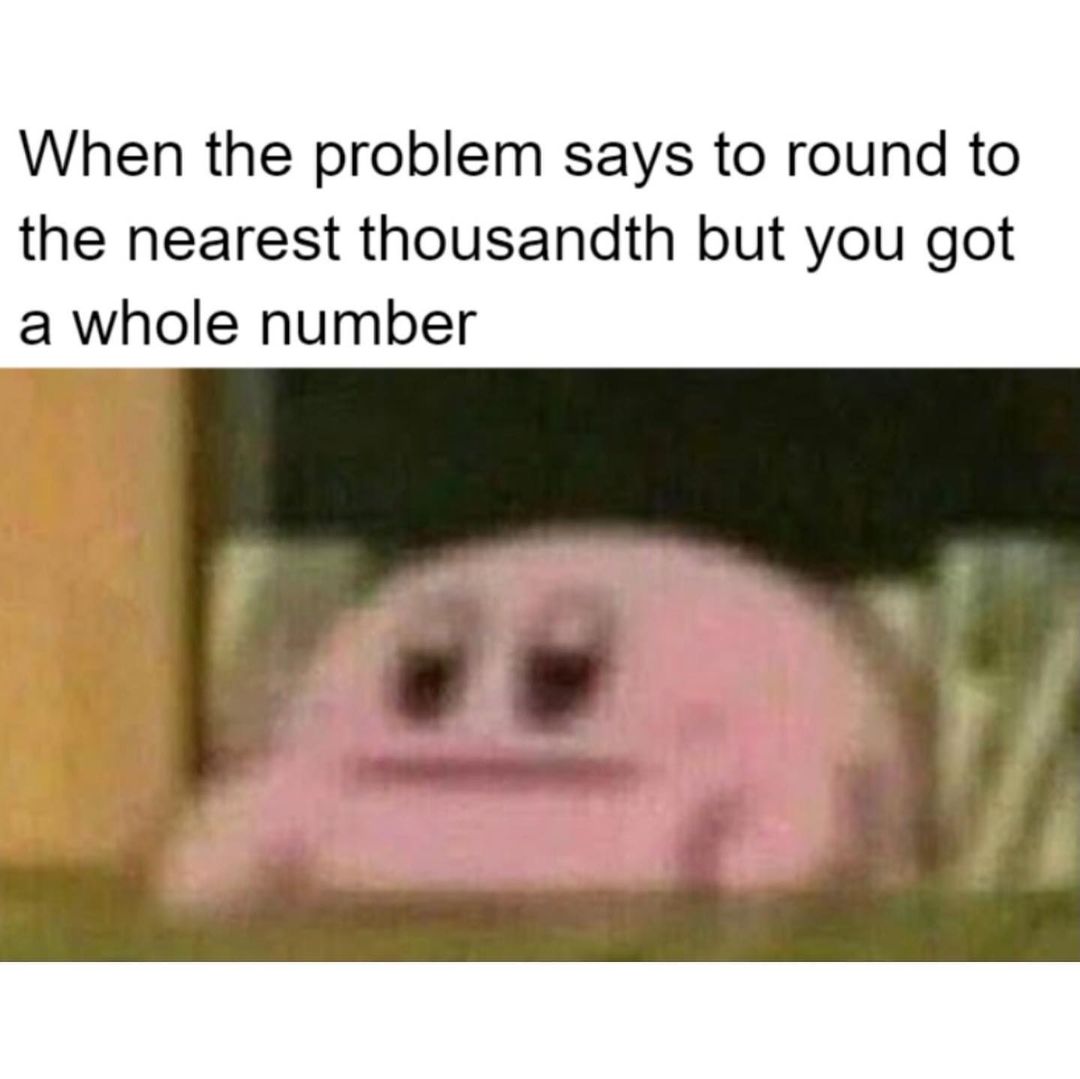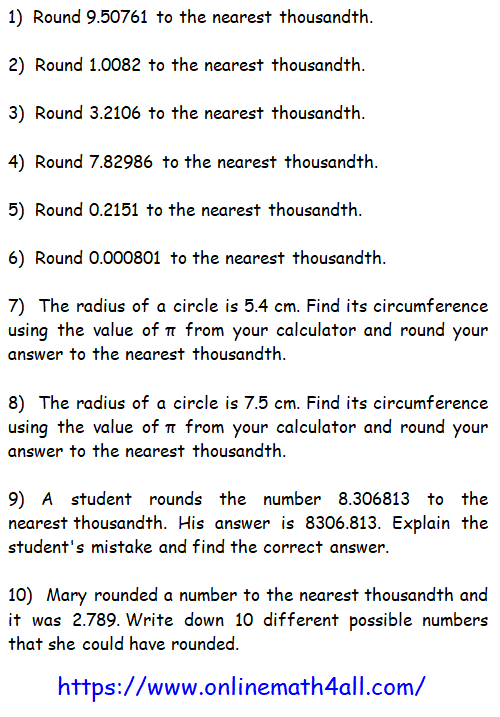Mastering the art of rounding numbers is an essential skill in mathematics, particularly when precision matters. Whether you're a student, a professional, or simply someone who loves numbers, understanding how to round to the nearest thousandth can significantly enhance your numerical accuracy. This guide will walk you through everything you need to know about rounding to the nearest thousandth, step by step, and provide practical examples to solidify your understanding.
Rounding numbers is a fundamental concept in mathematics and is used in various real-life applications, from scientific calculations to financial reporting. By mastering how to round to the nearest thousandth, you'll be able to simplify complex numbers while maintaining their approximate value. This skill is particularly useful when working with decimals in fields such as engineering, finance, and data analysis.
Throughout this article, we'll explore the rules, methods, and tips for rounding to the nearest thousandth. Additionally, we'll provide real-world examples and practice problems to help you apply what you've learned. Let's dive in and sharpen your rounding skills!
Table of Contents:
- Understanding Decimal Places
- Basics of Rounding Numbers
- What is the Thousandth Place?
- Rounding Rules to the Nearest Thousandth
- Examples of Rounding to the Nearest Thousandth
- Common Mistakes to Avoid
- Real-World Applications
- Using Tools for Rounding
- Practice Problems
- Conclusion
Understanding Decimal Places
Before we delve into how to round to the nearest thousandth, it's essential to have a clear understanding of decimal places. Decimal places represent the position of digits after the decimal point. Each position corresponds to a specific power of ten:
- The first position is the tenths place (10-1).
- The second position is the hundredths place (10-2).
- The third position is the thousandths place (10-3).
Knowing these positions is crucial for rounding numbers accurately. Let's explore further in the next section.
Basics of Rounding Numbers
Rounding is the process of simplifying a number while keeping its value close to the original. The goal is to make the number easier to work with while maintaining its approximate value. Here are the basic steps for rounding:
- Identify the place value to which you're rounding.
- Look at the digit immediately to the right of the place value.
- If the digit is 5 or greater, round up. If it's less than 5, round down.
These steps form the foundation for rounding to any decimal place, including the thousandth place.
What is the Thousandth Place?
The thousandth place is the third digit to the right of the decimal point. For example, in the number 0.123, the digit "3" is in the thousandth place. Understanding this position is key to rounding to the nearest thousandth.
Identifying the Thousandth Place
When working with decimals, it's important to correctly identify the thousandth place. Here's a quick guide:
- In 0.456, the thousandth place is "6".
- In 0.007, the thousandth place is "7".
- In 1.234, the thousandth place is "4".
Accurate identification ensures precise rounding.
Rounding Rules to the Nearest Thousandth
When rounding to the nearest thousandth, follow these rules:
- Locate the thousandth place in the number.
- Check the digit immediately to the right of the thousandth place.
- If the digit is 5 or greater, increase the thousandth place by 1.
- If the digit is less than 5, leave the thousandth place unchanged.
- Remove all digits to the right of the thousandth place.
These rules ensure consistency and accuracy in your rounding process.
Why These Rules Work
The rules for rounding are designed to balance simplicity and precision. By focusing on the digit immediately to the right of the rounding place, you can make informed decisions about whether to round up or down. This method minimizes errors and ensures that the rounded number remains close to the original value.
Examples of Rounding to the Nearest Thousandth
Let's apply the rounding rules to some examples:
- Round 0.1234 to the nearest thousandth: The digit in the thousandth place is "3", and the digit to the right is "4". Since "4" is less than 5, the answer is 0.123.
- Round 0.5678 to the nearest thousandth: The digit in the thousandth place is "7", and the digit to the right is "8". Since "8" is 5 or greater, the answer is 0.568.
- Round 1.9995 to the nearest thousandth: The digit in the thousandth place is "9", and the digit to the right is "5". Since "5" is 5 or greater, the answer is 2.000.
These examples demonstrate how the rounding rules work in practice.
Common Mistakes to Avoid
While rounding to the nearest thousandth may seem straightforward, there are common mistakes to watch out for:
- Forgetting to identify the correct place value.
- Incorrectly applying the rounding rules.
- Failing to remove digits after the thousandth place.
Double-check your work to avoid these errors and ensure accurate results.
How to Avoid Mistakes
To minimize errors, follow these tips:
- Underline or highlight the digit in the thousandth place.
- Verify the digit immediately to the right before rounding.
- Practice regularly to reinforce your understanding.
With practice, rounding becomes second nature.
Real-World Applications
Rounding to the nearest thousandth has numerous real-world applications, including:
- Scientific measurements: Rounding ensures precision in experiments and calculations.
- Financial reporting: Rounding helps simplify large datasets while maintaining accuracy.
- Engineering: Rounding is used in design and manufacturing processes to ensure tolerances.
These applications highlight the importance of mastering this skill.
Why Precision Matters
Precision is critical in many fields. For example, in pharmaceuticals, even small errors in measurements can lead to significant consequences. Rounding to the nearest thousandth ensures that calculations are as accurate as possible without being overly complex.
Using Tools for Rounding
While manual rounding is a valuable skill, there are tools available to assist with the process:
- Online rounding calculators.
- Spreadsheet software like Excel or Google Sheets.
- Scientific calculators with built-in rounding functions.
These tools can save time and reduce the risk of human error.
How to Use a Rounding Calculator
To use a rounding calculator, simply input the number you want to round and select the desired place value. The calculator will automatically apply the rounding rules and provide the result. This is especially useful for large datasets or complex calculations.
Practice Problems
Now it's your turn to practice rounding to the nearest thousandth:
- Round 0.7891 to the nearest thousandth.
- Round 1.2345 to the nearest thousandth.
- Round 0.0006 to the nearest thousandth.
Check your answers against the solutions provided at the end of this article.
Conclusion
Rounding to the nearest thousandth is a valuable skill that enhances numerical accuracy and simplifies complex numbers. By following the rules and practicing regularly, you can master this essential mathematical concept. Remember to:
- Identify the thousandth place correctly.
- Apply the rounding rules consistently.
- Avoid common mistakes through careful review.
We encourage you to share this article with others who may benefit from learning how to round to the nearest thousandth. Additionally, feel free to leave a comment or explore other articles on our site for more tips and tricks in mathematics.
References:
- Mathematics textbooks and educational resources.
- Scientific journals and research papers.
- Online calculators and tools for rounding numbers.


